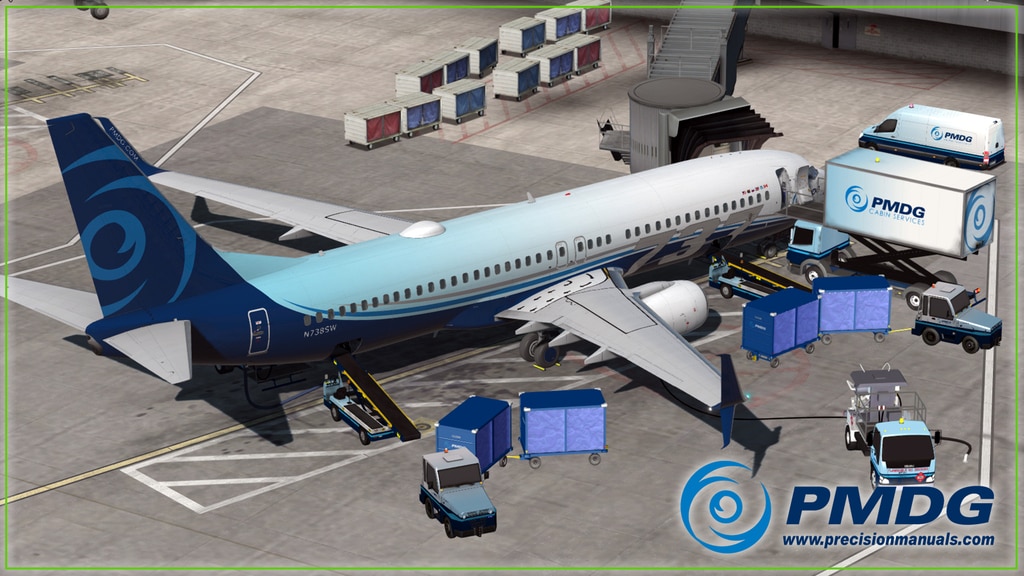
At 15:33, the aircraft broke up in midair and contact was lost. All three pilots were highly experienced – both pilots had more than 10,100 hours of flying time and the flight engineer had logged more than 19,100 flight hours. The flight crew consisted of 51-year-old Captain Yi Ching-Fong, 52-year-old Captain Shieh Yea Shyong, and 54-year-old Flight Engineer Chao Sen Kuo. The flight took off at 15:08 local time (07:08 UTC), and was scheduled to arrive at Hong Kong at 16:28 HKT (08:28 UTC). They were immediately grounded by the ROC's Civil Aviation Administration (CAA) after the crash for maintenance checks.
#PMDG 737 CRACK UPDATES FULL#
The other three had been in full passenger service until 1999, when they were converted to freighters. Only four passenger 747-200s were delivered to China Airlines, all from 1979 to 1980. The contract to sell the aircraft was voided after the crash and Orient Thai replaced the original aircraft it supposed to be acquired with another 747 after the crash.

The accident flight was to be the aircraft's penultimate flight for China Airlines, as it was scheduled to be delivered to Orient Thai Airlines after its return flight from Hong Kong to Taipei. Prior to the crash, China Airlines had sold B-18255 to Orient Thai Airlines for US$1.45 million. The aircraft had a 274-seat configuration. It was delivered to the airline in 1979, and had logged more than 64,800 hours of flight time at the time of the accident.
#PMDG 737 CRACK UPDATES REGISTRATION#
The aircraft involved, registration B-18255 (originally registered as B-1866), MSN 21843, was the only Boeing 747-200 passenger aircraft left in the China Airlines fleet at the time. As of 2022, the crash remains the deadliest in Taiwanese history, as well as the most recent accident of a 747 involving passenger fatalities. The in-flight break-up was caused by metal fatigue cracks resulting from improper repairs to the aircraft 22 years earlier.

On, the Boeing 747-209B operating the route disintegrated in midair and crashed into the Taiwan Strait, 23 nautical miles (26 mi 43 km) northeast of the Penghu Islands, 20 minutes after takeoff, killing all 225 people on board. In-flight break-up caused by metal fatigue from an earlier improperly repaired tailstrikeĢ3 nautical miles (26 mi 43 km) northeast of Makung, Penghu Islands, Taiwan StraitĢ3★9′23″N 119☄0′45″E / 23.98972°N 119.67917☎ / 23.98972 119.67917 Coordinates: 23★9′23″N 119☄0′45″E / 23.98972°N 119.67917☎ / 23.98972 119.67917Ĭhina Airlines Flight 611 was a regularly scheduled passenger flight from Chiang Kai-shek International Airport (now Taoyuan International Airport) in Taiwan to Hong Kong International Airport in Hong Kong. Qantas's Boeing 737s are used on many domestic routes and selected overseas services to New Zealand, Indonesia and Fiji.B-18255, the aircraft involved, seen while on final approach at Hong Kong International Airport, in 2000. She said Boeing had "assured" Qantas the aircraft were safe to be flown for the next 1000 cycles, even if there is a crack present in one of the components.īoeing said earlier this month 38 planes worldwide were discovered with pickle fork cracks and grounded for repair. But it's in a structural component, it's a very small part of that component and the structural integrity of an aircraft is made up of many components." "I completely understand the concern ," she said. She said the remaining 42 planes, due to their age, did not need to inspected for another 1000 take-off and landing cycles, which covers about seven months. Qantas fleet safety captain Debbie Slade said calls for the entire fleet to be grounded were "completely unnecessary". "When aircraft have serious issues in the air it's usually something very small like this escalating very fast." "The checks only take about an hour so they should be able to get an aircraft, send some engineers out there, and if there are no cracks there, they can fly it," Mr Purvinas said.

The ALAEA said all 75 aircraft in Qantas's 737 fleet should be grounded and inspected regardless of their flight history.


 0 kommentar(er)
0 kommentar(er)
